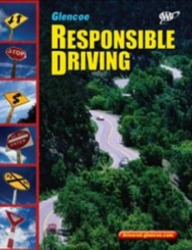 
Responsible DrivingChapter 5:
Basic Control TasksBasic Control Tasks
Lesson 1
In this lesson, you will learn about the basic procedures for starting and moving a vehicle with automatic transmission. |
 |  |  | Lesson 2
This lesson will define acceleration and deceleration, and explore how they are related to speed control. You will examine the important relationship between speed control and risk management. |
 |  |  | Lesson 3
In this lesson, you will learn about the basic procedures for starting, moving, and stopping vehicles with manual transmissions. |
 |  |  | Lesson 4
You will learn that changes in three major highway conditions —visibility, traction, and space—determine whether drivers should make speed adjustments. |
 |  |  | Lesson 5
You will learn that changes in three major highway conditions —visibility, traction, and space—determine whether drivers should make speed adjustments. |
 |  |  | Lesson 6
In this lesson, you will learn about the four components of total stopping distance: human perception, human-reaction time, vehicle-reaction time, and vehicle-braking distance. |
 |  |
|





